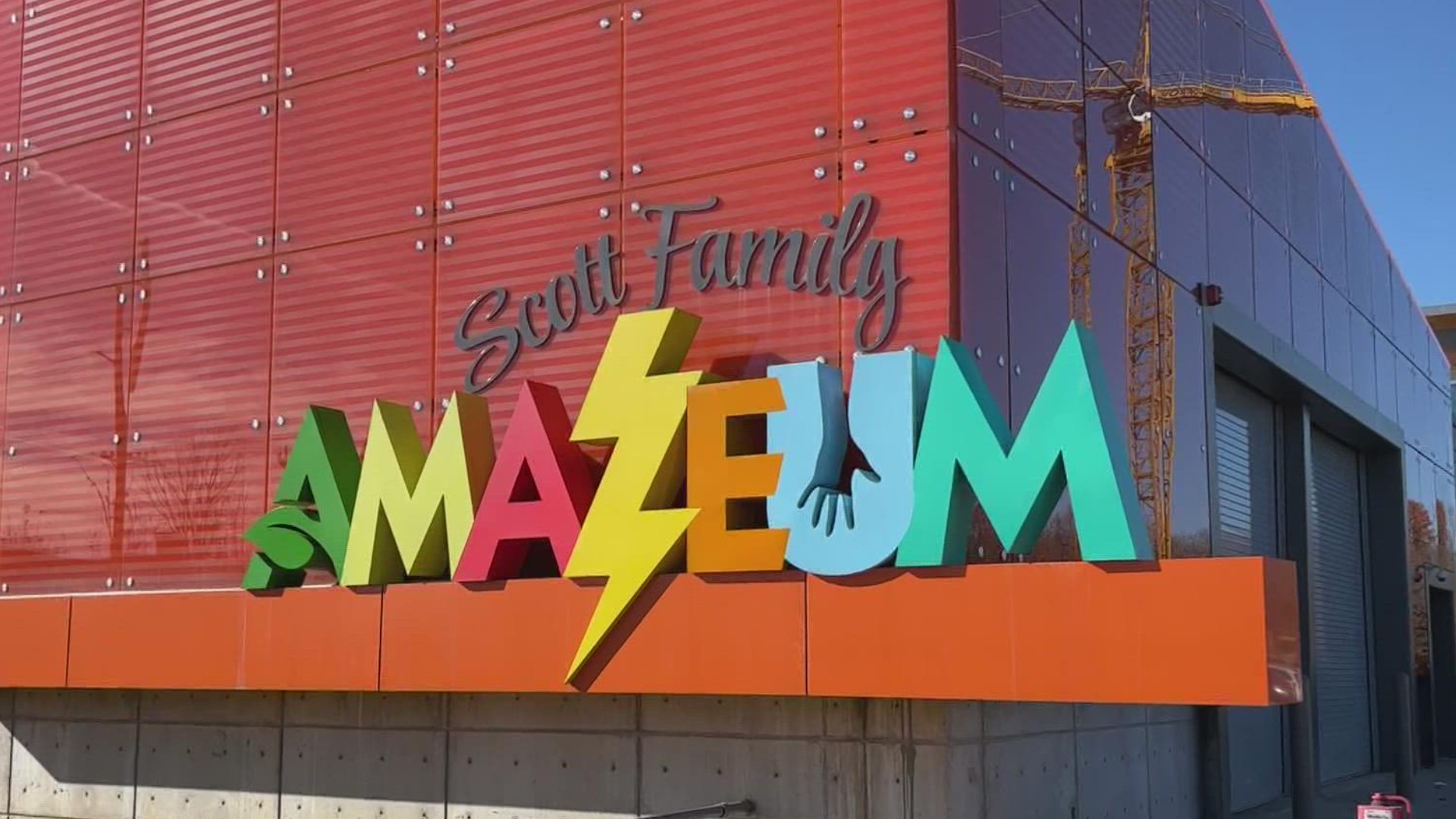BENTONVILLE, Ark. — The Scott Family Amazeum will be opening a new exhibit on Jan. 29.
The exhibit is called "Math Moves!" Playfully Explores Ratio and Proportion and will provide over 20 unique interactive experiences related to ratios and proportions. Math Moves! encourages a collaborative approach to problem-solving with open-ended activities that are fun for the whole family.
The exhibit will be opened in the traveling gallery to members from 9 a.m to 12 p.m. and to non-members at 12 p.m.
It will allow visitors to interact by using their bodies and gestures to actively set up, measure, describe, and compare ratios and proportions. Amazeum officials say acting out math concepts is a powerful tool for exploring, questioning, and understanding math. Officials say active learning builds connections that support solving math challenges.
The Scott Family Amazeum says,
"Math Moves! connects ratio and proportion to daily life. Not only is an understanding of ratio and proportion important success in middle and high school math, but the concepts are constants in daily life. Adjusting ingredients for recipes, creating a family budget, building, and other measurable tasks involve ratio and proportion."
The exhibit will be on display permanently but the interactive experiences will be changed during the exhibit and will be available in English and Spanish. The exhibit is included in the museum's daily admission fee and members are always admitted for free.
Below are the Math Moves! exhibits and their functions:
Partner Motion: Visitors can grab a partner and see how their rates of motion look as graphs on a screen. As they walk back and forth, they’ll create graphs of their motions, and as they modify their speed, they’ll see how the graph data changes. The graphs display their movement over time, giving them direct proportional slopes, another way to think about how their rates compare.
Sensing Ratios: In this section of Math Moves, visitors will use knobs to experiment with tone generators. The positions of the knobs are graphed on the screen, with the left knob on the y-axis and the right knob on the x-axis. They can use the exhibit with their eyes closed, for instance, they can make a stair-step pattern by adjusting the tones first to come into unison and then moving one of the knobs up until the tones are an octave apart.
Comparing Frequencies: Visitors will create rhythmic percussive sounds using one or more small wheels driven by a larger wheel. The small wheels have clickers that sound with each turn. The frequency of the clicks depends on the diameter of the small wheel, as well as where it contacts the large turning wheel. Visitors will experiment with several wheels to compare frequencies of the clicks, both seeing and hearing the rhythm of proportions and frequency of clicking.
Shadow Fractions: In this section, visitors will make shadow stories with scaled objects. A bright light will cast shadows of the objects on a grid. Visitors will move the objects, which are identical except for their sizes 2”, 4”, and 8” high. As they increase or reduce the size of the objects’ shadows, they’ll directly experience physical science.
Click here for more information.

